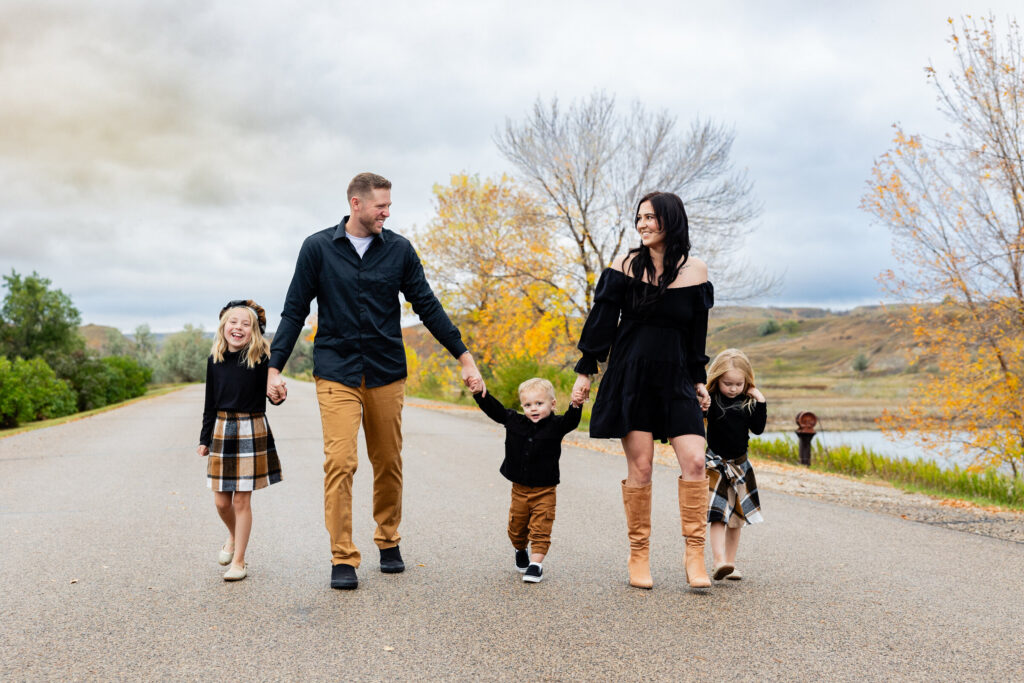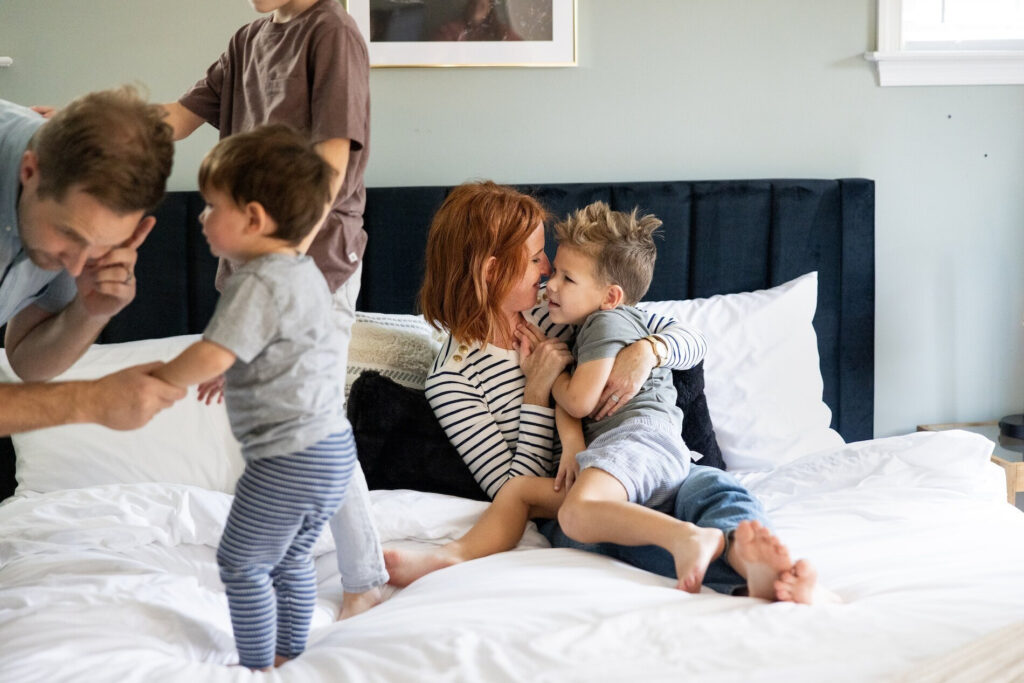The Business Side of Photography: How to Price Your Work with Confidence
Trying to figure out how to price your work as a photographer? This is probably one of the most common challenges photographers face in their early years. It’s not just about picking a number that feels right—it’s about creating a pricing structure that supports your business, pays you fairly, and positions you as a professional in the eyes of your clients. If you’re one to three years into your photography business, you’re likely starting to realize how vital it is to approach pricing with clarity and confidence.
Before we dive in—hi there! I’m Kellie, a lifestyle photographer, educator, and mentor based in North Dakota. I’m here to cheer on fellow photographers chasing their dream businesses. Whether you’re ready to price your work with confidence, refine your client experience, or just need a little encouragement, you’re in the right place. Be sure to check out my mentorship opportunities, download my free scouting guide, or reach out directly—I’d truly love to connect and support you on your journey.

How to Price Your Work: Understanding Your Cost of Doing Business (CODB)
Before you can set prices that feel good and actually work for your business, you need to know your numbers. Your cost of doing business (CODB) is more than just your camera gear—it’s the full picture of what it takes to keep your business running.
Here’s what you should include in your CODB calculation:
- Fixed Costs: Website hosting, CRM subscriptions, insurance, studio rent (if applicable), editing software, equipment maintenance.
- Variable Costs: Printing, packaging, outsourcing (like editing or album design), travel, client gifts.
- Time Costs: Your time spent shooting, editing, emailing, bookkeeping, marketing, and learning.
When you know your true operating costs, you can set prices that cover expenses and allow for profit—not just survival.
Pro Tip: Divide your total yearly CODB by the number of shoots or clients you want to take on annually. That gives you a baseline per session before adding any profit.
Researching the Market (Without Competing on Price)
Once you understand your cost of doing business, the next step in learning how to price your work is researching the market—not to undercut others, but to understand your positioning.
It’s easy to fall into the trap of thinking you need to charge less than other photographers to attract clients. But pricing based on what others charge—without knowing their costs, experience, or strategy—can leave you underpaid and overwhelmed.
Instead, approach market research with these goals in mind:
- Understand the local range by looking at photographers in your area with similar experience levels and styles. Where do you naturally fit?
- Identify gaps in the market. Are there photographers charging premium rates for a specific niche or client experience? What sets them apart?
- Observe value, not just numbers. Pay attention to what’s included in packages—turnaround time, products, client experience—not just the price tag.
- Know your value proposition. What do you offer that justifies your pricing? Is it your unique editing style, client experience, turnaround time, or educational support?
Remember: Pricing is not a race to the bottom. Competing on value rather than price helps you build a business that grows sustainably, not one that burns you out.
Structuring Your Pricing for Profitability
Now that you know your numbers and understand the market, it’s time to structure your pricing so that it not only covers your costs but also sets you up to thrive—not just survive. Many photographers get stuck in this area, but a thoughtful structure can completely shift how confidently you show up and sell. Learning how to price your work for profitability means creating a pricing model that supports both your business goals and your desired lifestyle.
A strong pricing structure starts with building in perceived value. Think about small touches that feel high-end to your clients but are low-effort or low-cost for you—things like a beautifully designed pre-session guide, a small product credit, or a personalized client gift. These thoughtful details elevate your client experience without draining your time or budget.
From there, begin with your cost of doing business as your baseline, but don’t stop there—your pricing should also reflect the profit you want to make. This is how you create sustainability, not just survival. Tiered packages are another great strategy, helping clients naturally gravitate toward your mid- or top-tier options. It’s a subtle way to increase your average sale while making your higher-value offerings shine.
You can also use psychological pricing techniques like anchoring—your highest-priced package helps your mid-range option feel like a smart, budget-friendly choice. And don’t forget to leave room in your pricing for growth. Whether it’s outsourcing, investing in new tools, or simply taking on fewer clients to create more space in your life, your pricing should support the business (and lifestyle) you’re building.

How to Handle Pricing Objections with Confidence
Even when you’ve done everything right—calculated your CODB, structured your pricing strategically, and built value into your packages—you’ll still encounter clients who hesitate or push back. That’s completely normal. What matters is how you respond. Handling pricing objections confidently doesn’t mean being defensive—it means standing firm in the value you offer and communicating it clearly. Remember, how to price your work is only part of the equation—how you stand behind your pricing is just as important.
Here’s how to approach it:
- Know your boundaries: It’s okay to kindly refer clients elsewhere if they’re truly not a fit. Discounting out of fear sets a precedent that can hurt your long-term growth.
- Stay calm and curious: If someone questions your pricing, ask thoughtful questions to understand their hesitation instead of jumping into discounting mode.
- Reiterate the value, not just the deliverables: Remind them what they’re really investing in—your expertise, attention to detail, experience, and the overall client journey.
- Offer clarity, not discounts: If a client is unsure, it’s often due to confusion or misalignment, not the actual number. Clear communication is your best tool.
- Have strong talking points ready:
“I completely understand budget concerns. Many of my clients felt the same way at first but shared afterward that the experience was well worth the investment.”
“What you’re getting goes beyond the photos—it’s personalized support, guidance, and a stress-free process from start to finish.”
Want more real talk about running your business? Check out my podcast episode: Non-Negotiable – Outsourcing & Hiring a VA (Part 1).
How to Price Your Work: Raising Prices the Right Way
Raising your prices can feel intimidating—but it’s a natural and necessary part of business growth. As your experience, demand, and expenses increase, so should your rates. Learning how to price your work also means knowing when and how to adjust those prices with intention.
Here’s how to raise your prices in a way that feels smooth and professional:
- Raise prices gradually, but consistently: You don’t have to double your rates overnight. Small, strategic increases over time are more sustainable and less jarring to your audience.
- Align price increases with added value: Whether it’s a refined client experience, new gear, better editing, or an improved workflow—make sure your higher prices reflect a stronger offering.
- Announce it with confidence: You can share a “price increase coming soon” message with your audience, especially if you want to encourage last-minute bookings at your current rate.
- Use it as a marketing opportunity: “I’ve grown so much in the past year and have made some exciting updates to my process, gear, and client experience. With that, my pricing will be increasing starting [date].”
- Don’t apologize: Pricing adjustments aren’t something you need to justify with apologies or over-explanations. This is part of running a healthy, growing business.
Remember, your prices reflect your professionalism, not just your product. When you raise them with confidence and intention, the right clients will continue to say yes. This approach also helps you make confident decisions because you’re not just reacting—you’re following a vision.

You Deserve to Be Paid Well for Your Work
Learning how to price your work as a photographer isn’t just a business skill—it’s a mindset shift. You’re not just clicking a shutter; you’re creating a valuable experience, delivering lasting memories, and running a real business. Your time, talent, and expertise deserve to be compensated fairly.
If you’re in the first few years of your photography journey, know this: pricing doesn’t have to feel confusing or uncomfortable. With the right structure, clarity around your numbers, and the confidence to communicate your value, you can build a sustainable business that supports both your art and your life. And if you’re still feeling stuck or unsure about how to price your work or navigate the business side of photography, that’s exactly where my mentorship comes in. You don’t have to figure it all out alone!
Don’t forget to check out my free scouting guide I have available! In the meantime, you can check out some of my other blog posts, follow along on Pinterest, or join in on the fun on Instagram!
If you liked this blog, be sure to check out these posts:
ND Destination Photographer’s 2025 Travel Bucket List